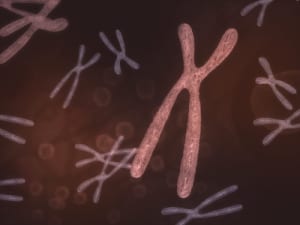
In genetic anthropology, mitochondrial DNA and the Y chromosome are the major players.
Scientists use these regions of our genome most frequently when tracing ancient and historical human migrations, and they are important tools for genealogists who use DNA to piece together their family trees.
X Marks the Spot
But another part of the human genome has recently started to prove itself as a window into our species’ past: the X-chromosome.
Like both the mtDNA and the Y-chromosome, the X is passed from parents to children in such a way that scientists can use it to trace the deep ancestry of our species. However, only recently has the X-chromosome been used this way, and some of the early research has been somewhat inconsistent.
Now, the authors of a paper published in this week’s Nature Genetics believe they have perfected a way of using the X-chromosome to unravel details about the initial migration of humans out of Africa tens of thousands of years ago. Their results suggest that more men than women were involved in the exodus that initiated the peopling of the entire globe.
Why the X and not the Y?
One of the reasons analysis of the X-chromosome has not proven straightforward compared to the mtDNA or the Y-chromosome is that the way the X is passed down from one generation to the next differs depending on the child’s sex. Fathers pass on their X chromosomes to their daughters, but not their sons, while mothers pass one X chromosome to their children of both sexes. So, while any person’s X-chromosome came down to them along a specific lineage – just like their Y-chromosome and mtDNA – that path is impossible to trace.
The XX
However, the X chromosome does have one distinctive quality. Since men have one and women have two, any population with a 50/50 sex ratio will have three X chromosomes for every four of the 22 paired chromosomes. That means all other things are equal, and genetic diversity on the X-chromosome should be about three-quarters as much as on the non-sex chromosome.
To see if all has been equal in the history of the human species, researchers from Harvard, the Broad Institute, and the National Human Genome Research Institute analyzed the genotypes of people from around the globe. They looked for differences among the populations of Africa, Europe, and East Asia. Though they found the expected 75% X-chromosome diversity ratio within Africans, there was considerably less diversity among European and East Asians on the X compared to their 22 non-sex chromosomes.
Genetic Variation
What could all this mean?
First, a decrease in genetic variation is usually a sign of decreased population size. Because it shows up in East Asians and Europeans but not Africans, the authors believe the decreased variation is a signal of a population bottleneck that occurred after humans left Africa for the first time nearly 60,000 years ago – but before the non-African populations diverged from each other.
However, the decreased genetic variation only seems to show up on the X-chromosome. This, the authors speculate, may be due to some sort of sex-biased migration. In other words, when humans first ventured outside of Africa and into Europe and Asia, there may have been more men on the move than women. Scientists have long observed the same phenomenon when comparing the Y-chromosome to mtDNA; now researchers see the same phenomenon here with the X.



